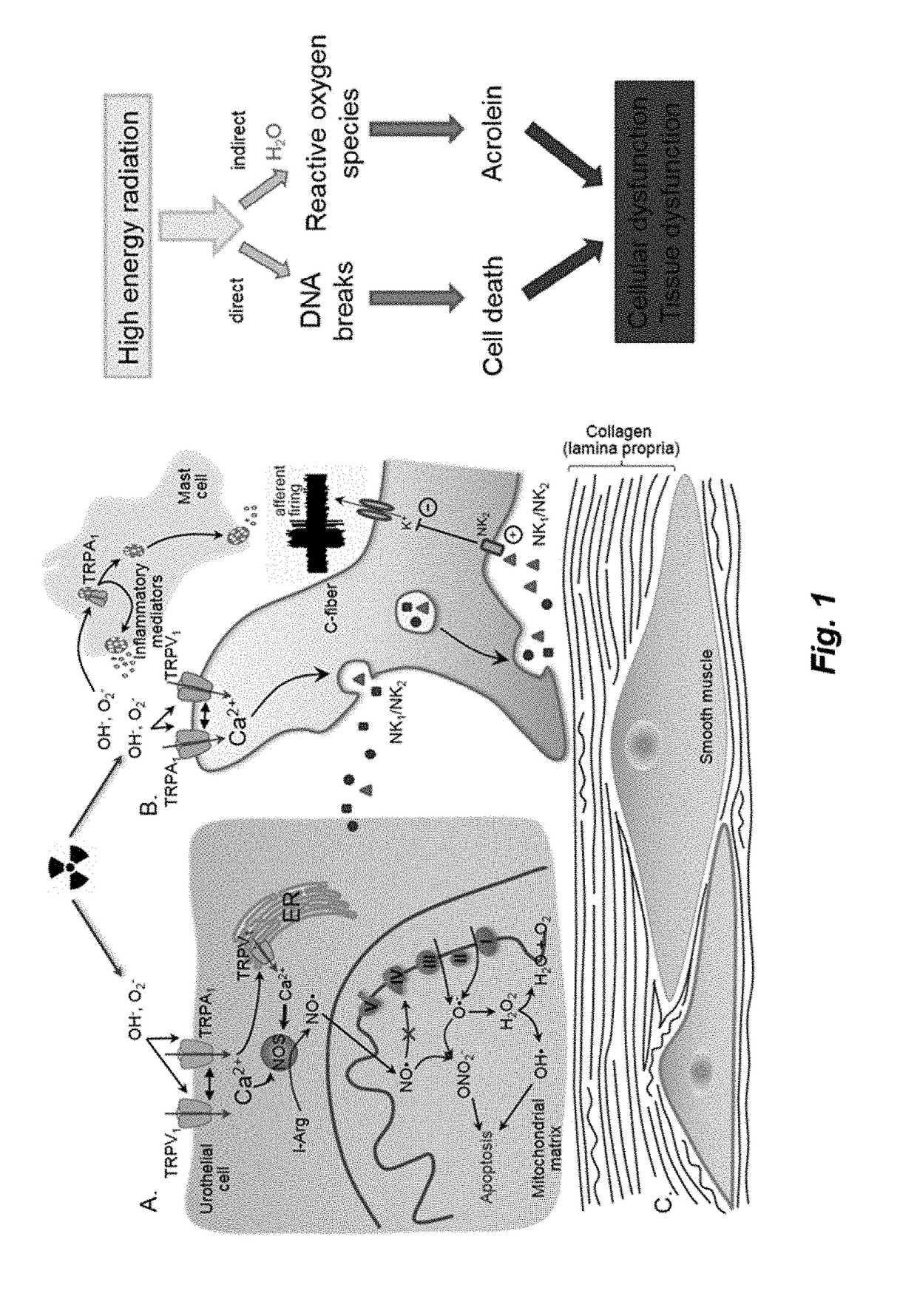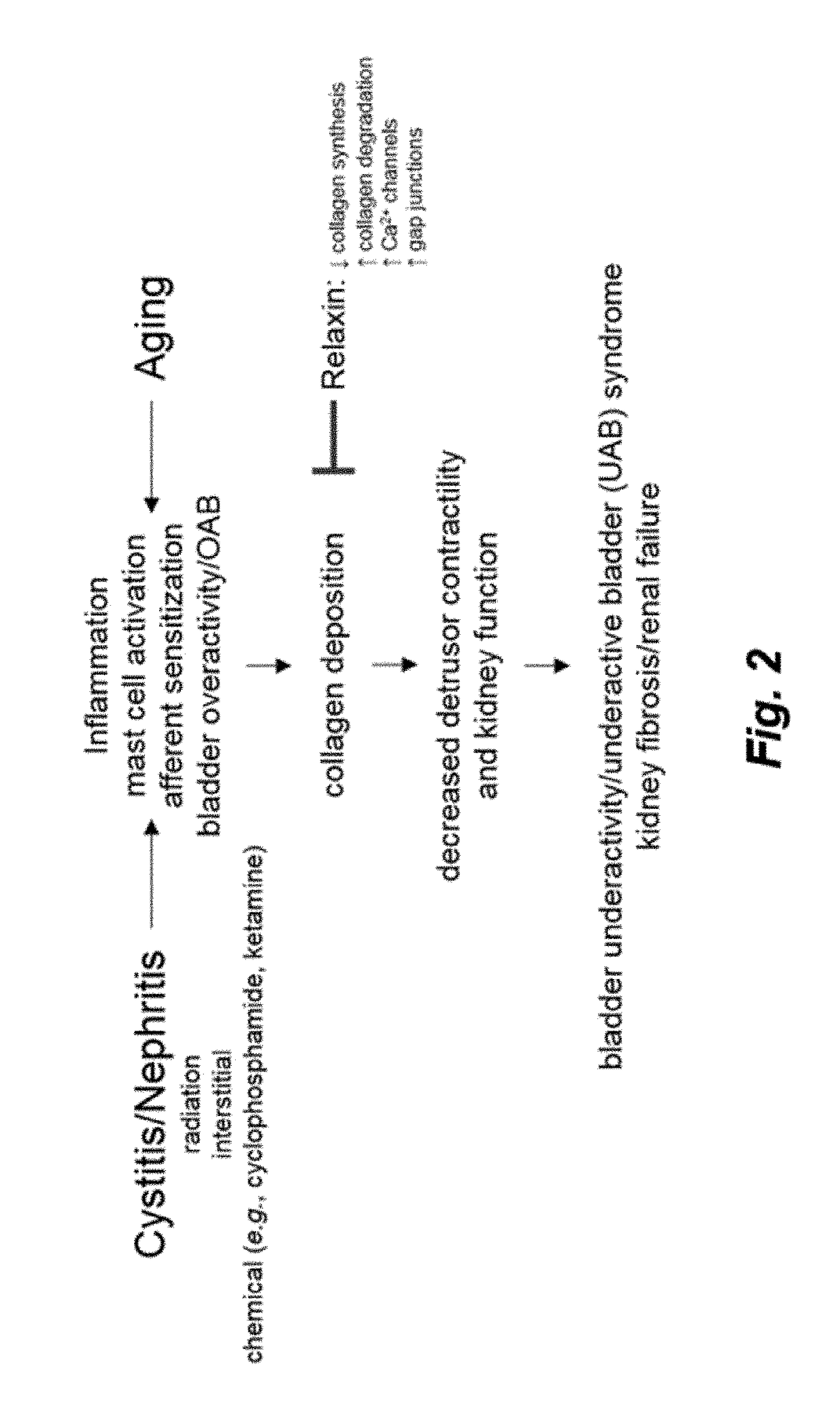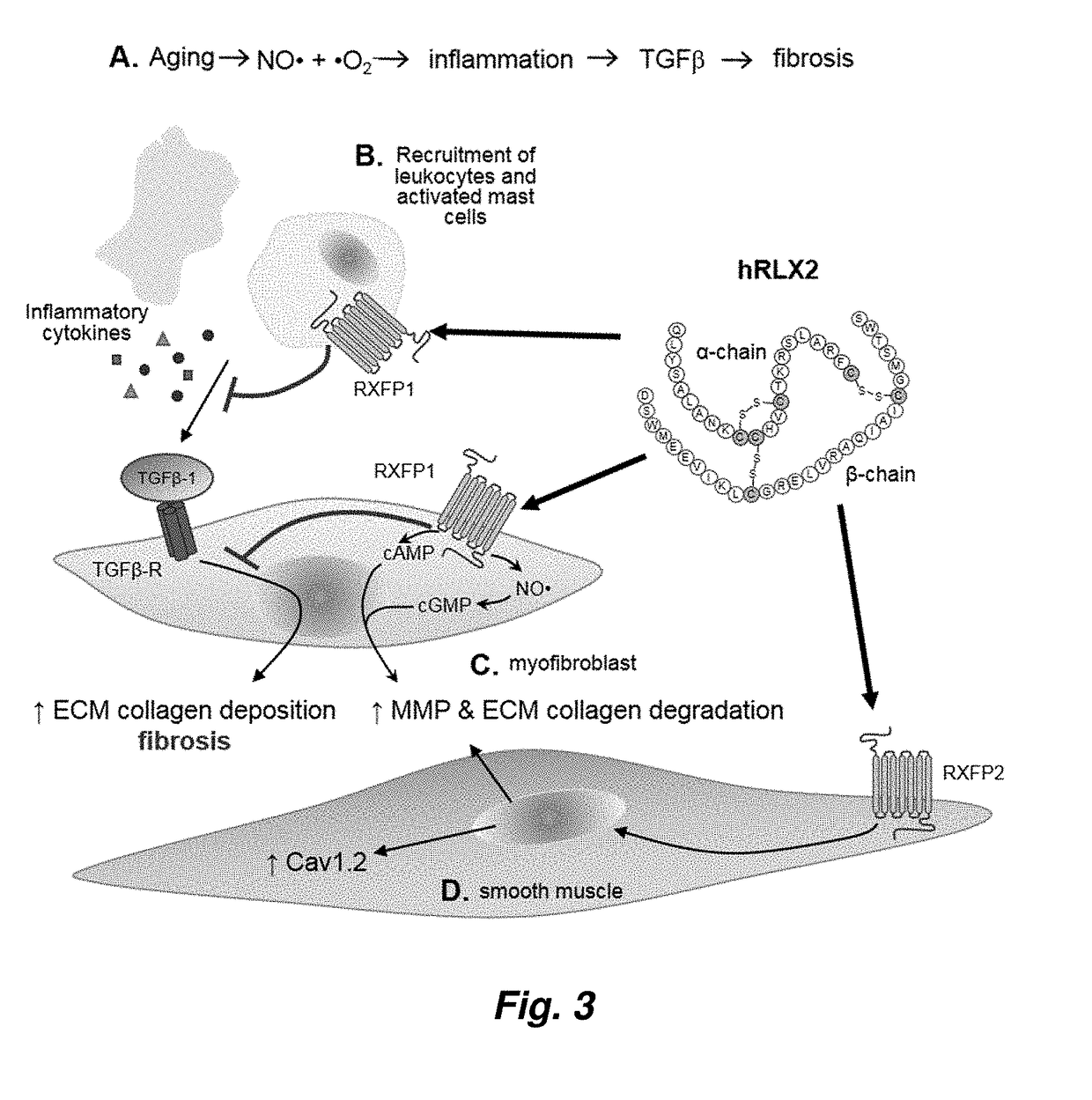Therapy for Lower Urinary Tract Dysfunctions
a technology for urinary tract dysfunction and treatment, applied in the direction of hormone peptides, drug compositions, peptide/protein ingredients, etc., can solve the problems of limited radiation dose, lethal irradiation >10 gy, and failure to demonstrate optimal efficacy, etc., to achieve effective and safe treatment
- Summary
- Abstract
- Description
- Claims
- Application Information
AI Technical Summary
Benefits of technology
Problems solved by technology
Method used
Image
Examples
example 1
everses Radiation Cystitis Injuries
[0079]A mouse model was developed to mimic chronic radiation cystitis. As a surrogate to chronic radiation cystitis in the mouse, a laparotomy was performed where the bladder was briefly withdrawn for selective high dose (10 Gy) irradiation (FIG. 4(A)). Delivered to the pelvic region such a dose could be lethal (LD50≅8 Gy). By 9 weeks following selective bladder irradiation, cystometry revealed that animals were unable to void and exhibited overflow incontinence as shown in FIG. 4(C). We attribute this inability of the bladder to empty normally to decreased compliance due to chronic fibrosis (as demonstrated in FIGS. 5A-5D). The corresponding external urethral sphincter (EUS) electromyogram (green traces) demonstrates that the animals had prolonged guarding reflexes and that bursting did not occur. However, when relaxin was administered for 2 weeks starting at week 7 post-irradiation (400 μg / kg / day infused subcutaneously using implantable ALZET min...
example 2
nderactivity / Underactive Bladder (UAB) Syndrome
[0080]In studies using Fischer rats (F-344) from the NIA, 24 month-old aged animals exhibited substantial increases in passive tension not seen in 9 month-old adults, while active tensions were comparable among the two age groups (FIG. 6A). However, following 2 weeks of treatment with relaxin (400 μg / kg / day infused subcutaneously using ALZET pumps), there were substantial increases in both compliance and force generation in the aged rats. These increases in force generation were not due to enhanced cholinergic or purinergic transmitter release (FIG. 6B), but rather decreases in collagen content (FIG. 6C and FIG. 6D) and increases in smooth muscle expression of Cav1.2α, as demonstrated using immunohistochemistry (FIG. 7). This is the first use of relaxin to treat bladder dysfunction due to aging and may be the first effective treatment for bladder underactivity / UAB syndrome in the elderly.
example 3
or Treatment of Underactive Bladder
[0081]We hypothesize that relaxin may be therapeutic in treating bladder underactivity in the elderly for which there is no effective treatment. Aims of this study were to test the effect of systemically administered relaxin on bladder smooth muscle function in aged versus adult rats.
[0082]Study Design, Materials and Methods:
[0083]Adult (9 months old) and aged (24 months old) Fisher 344 / Brown Norway F1 (F-344) male rats were used in this study. Six out of twelve rats in each age group were treated with relaxin (400 μg / kg / day) or vehicle which were infused by osmotic mini-pumps (ALZET) for 14 days, after which bladders were excised and cut from outlet to dome along the midline ventral and dorsal aspects to form two strips.
[0084]One strip was placed in a recording chamber with oxygenated Krebs solution. The base was pinned to a fixed platform and the dome connected to a tension transducer mounted on a programmable stepper motor. Bladder strips were s...
PUM
| Property | Measurement | Unit |
|---|---|---|
| particle size | aaaaa | aaaaa |
| thick | aaaaa | aaaaa |
| concentration | aaaaa | aaaaa |
Abstract
Description
Claims
Application Information
 Login to View More
Login to View More - R&D
- Intellectual Property
- Life Sciences
- Materials
- Tech Scout
- Unparalleled Data Quality
- Higher Quality Content
- 60% Fewer Hallucinations
Browse by: Latest US Patents, China's latest patents, Technical Efficacy Thesaurus, Application Domain, Technology Topic, Popular Technical Reports.
© 2025 PatSnap. All rights reserved.Legal|Privacy policy|Modern Slavery Act Transparency Statement|Sitemap|About US| Contact US: help@patsnap.com



